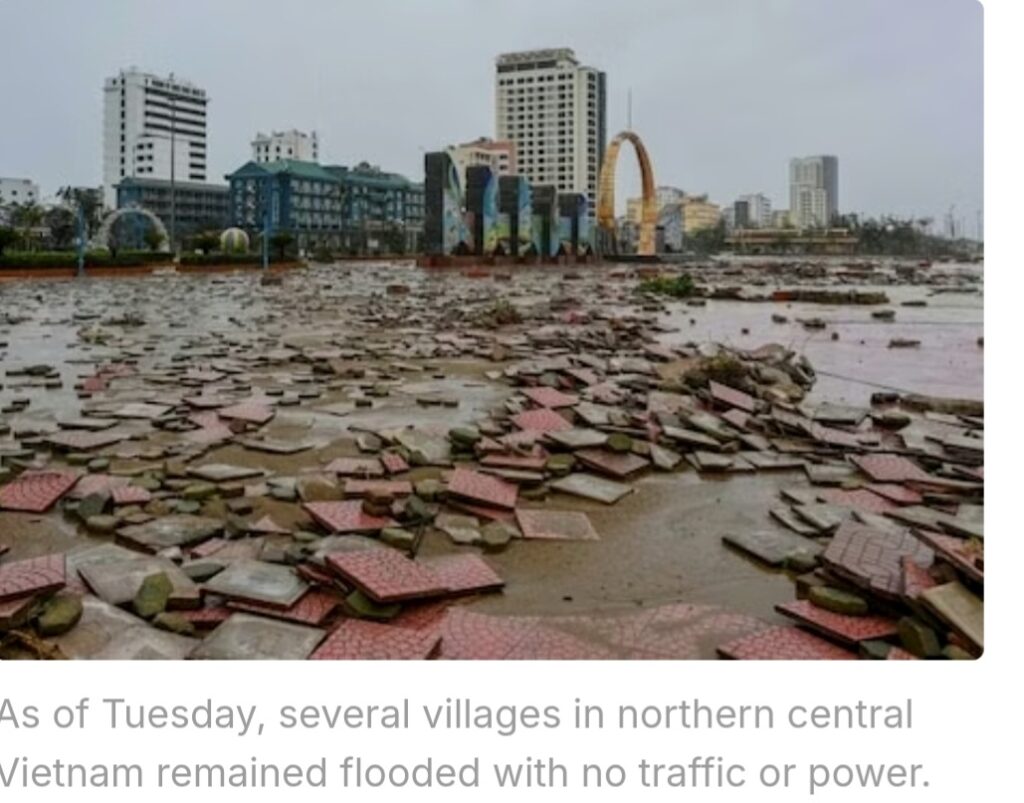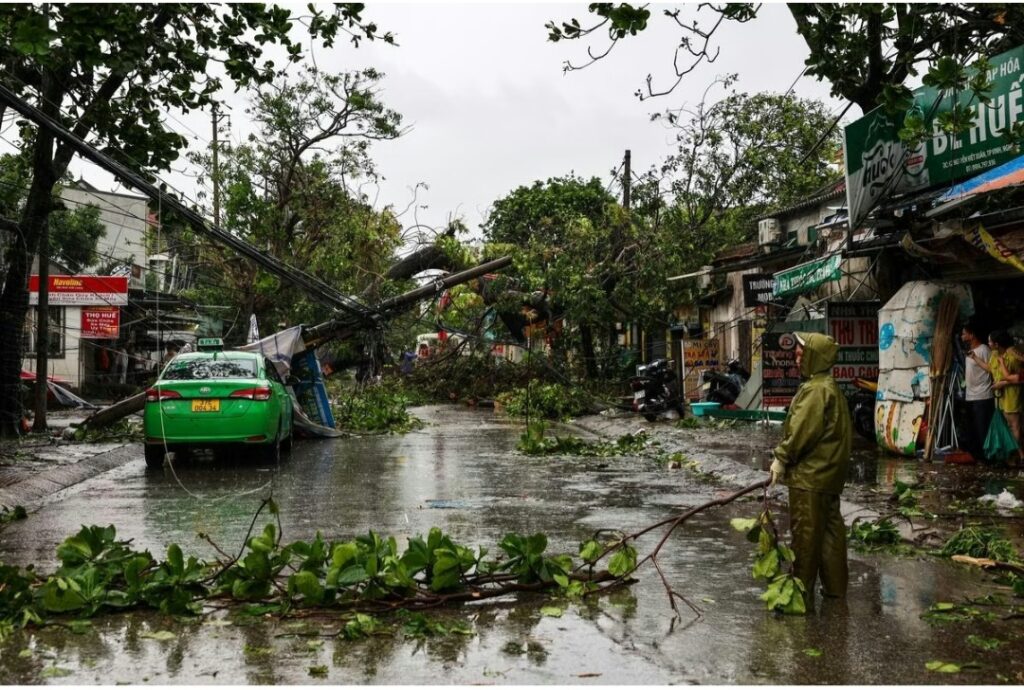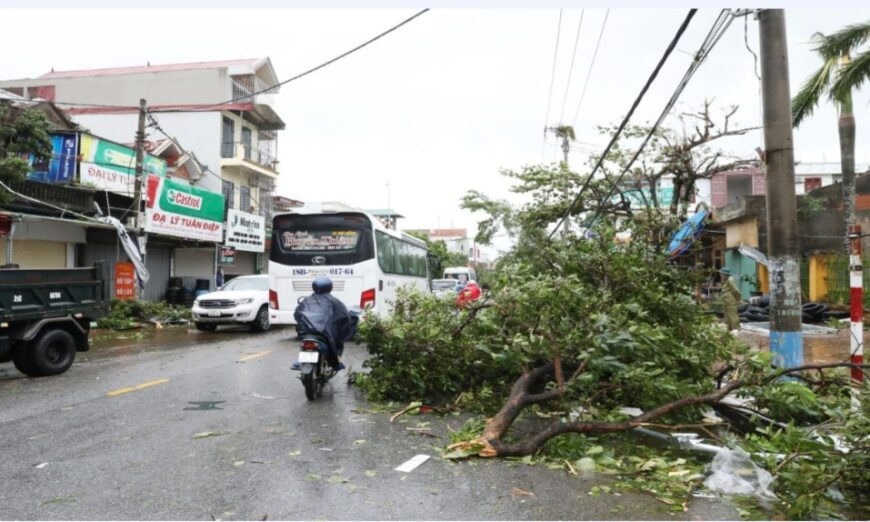
The death toll from Typhoon Bualoi in Vietnam has risen to 19, with 88 injured, and thirteen people are missing. More than one lakh five thousand houses were unroofed or damaged.
Vietnamese Prime Minister Pham Minh Chinh has instructed local authorities and sectors to take urgent measures. PM Chinh also extended his deepest condolences and sympathy to the bereaved families. He ordered the repair of damaged educational and medical facilities before October 5.
According to the National Centre for Hydro-Meteorological Forecasting, flash floods and landslides are expected to persist for the next two to three days. According to the national weather agency, rainfall in several parts of Vietnam had exceeded 300 millimetres over the past 24 hours.
Vietnam’s death count from Typhoon Bualoi rose to 19 with another 21 people still missing, the government said on Tuesday, making it the most devastating storm to hit the country this year as heavy rain raised the risk of flooding and landslides in northern regions.
Bualoi made landfall on Monday in northern central Vietnam, bringing huge sea swells, strong winds and downpours. Last week, the typhoon had killed at least 10 people in the Philippines.
The government said 88 people had also been injured, more than 100,000 houses were damaged, mostly in Nghe An and Ha Tinh provinces, and more than 10,000 hectares of rice and crops had been inundated.
Rainfall in several parts of Vietnam had exceeded 300 millimetres over the past 24 hours, the national weather agency said. Heavy rains would continue, including in the capital Hanoi, and strong winds and lightning were also possible, it said.
“Landslides and flash floods are likely to happen in several areas over the next six hours,” the agency said.
As of Tuesday, several villages in northern central Vietnam remained flooded with no traffic or power, state media reported.
With a long coastline facing the South China Sea, Vietnam is prone to typhoons that often also bring heavy rains that cause severe flooding.
More than 105,000 houses were unroofed or damaged, with central Ha Tinh province hardest hit, accounting for over 78,800 of them.
Vietnamese Prime Minister Pham Minh Chinh has instructed local authorities and sectors to take urgent measures to support affected residents and mitigate the aftermath of the typhoon.
He ordered the repair of damaged educational and medical facilities before Oct. 5.
According to the National Center for Hydro-Meteorological Forecasting, flash floods and landslides are expected to persist for the next two to three days
The typhoon, the country’s deadliest storm this year, made landfall in north-central Ha Tinh province on Monday, bringing eight-meter (26-foot) waves, fierce winds, and nearly 300 millimeters (11.8 inches) of rainfall, damaging more than 135,000 homes and injuring 105 people.
Some 17 of the missing are fishermen caught in huge waves off Quang Tri province on Monday.
Flooding also damaged 25,500 hectares (63,011 acres) of rice and crops. More than 8,700 hectares (21,498 acres) of aquaculture were washed away.
Authorities evacuated nearly 30,000 people ahead of the cyclone, while hundreds of flights were cancelled.
The development of Bualoi, also known as “storm No.10,” shows that this is the fastest-moving storm ever in the East Sea.
It took around two days, from Sept. 26 to Sept. 28, for the storm to travel more than 1,000 kilometers (621 miles), directly impacting the mainland of the country’s northern and central regions.



